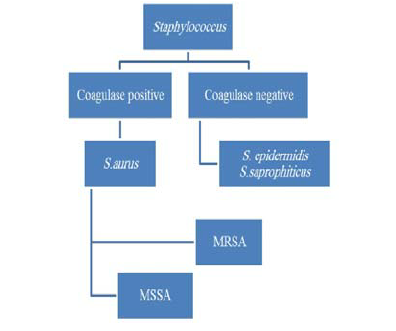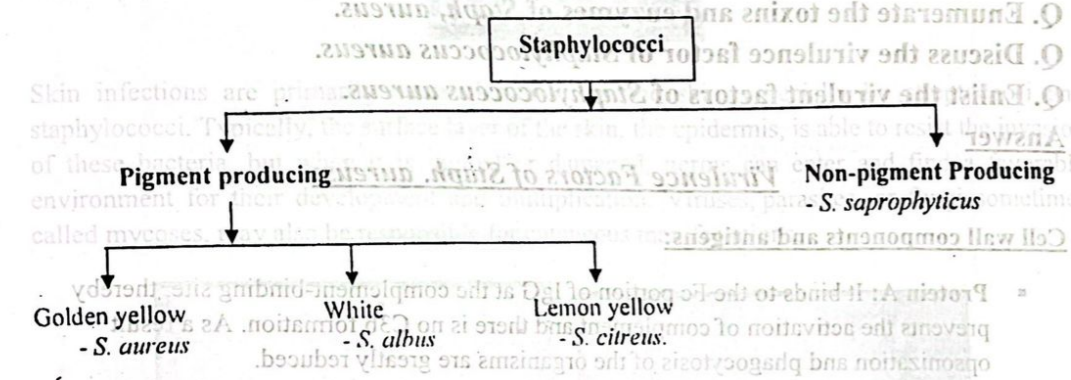Definition of Staphylococci – Basic microbiology, parasitology, and immunology; nature, reproduction, growth, and transmission of common microorganisms and parasites in Bangladesh; prevention including universal precaution and immunization, control, sterilization, and disinfection; and specimen collections and examination. Students will have an understanding of common organisms and parasites caused human diseases and acquire knowledge about the prevention and control of those organisms.
Definition of Staphylococci
Staphylococcus is a group of bacteria that cause a multitude of diseases. Under a microscope, staphylococcus bacteria are round and bunched together. They can cause illness directly by infection or indirectly through products they make, such as the toxins responsible for food poisoning and toxic shock syndrome.
Classification of Staphylococci:
A. On the basis of coagulase production:

B. On the basis of pigment production in culture media:

Clinically Important Staphylococci :
➤ Staphylococcus aureus
➤ Staphylococcus epidermidis
➤ Staphylococcus saprophyticus
Properties of Pathogenic Staphylococci:
- Staphylococci are spherical Gram-positive cocci arranged in irregular grape-like clusters.
- All staphylococci produce catalase (streptococci do not produce catalase).
- Staphylococcus aureus produces coagulase (other staphylococci do not).
- Staphylococcus aureus ferments mannitol & hemolyzes red blood cells.
- They are non-spore forming and non-motile.
- They are aerobic or facultative aerobes.
- They grow in nutrient usual bacteriological media e.g. agar, blood agar etc.
- Some staphylococci produce phosphatase.
- Some staphylococci produce ẞ-lactamase which are resistant to penicillin & cephalosporin.

Virulence Factors of Staph. aureus:
Cell wall components and antigens:
- Protein A: It binds to the Fc portion of IgG at the complement-binding site, thereby prevents the activation of complement and there is no C3b formation. As a result blo opsonization and phagocytosis of the organisms are greatly reduced.
- Teichoic acids: They mediate adherence of the staphylococci to mucosal cells.
- Peptidoglycan: It has endotoxin-like properties
- Polysaccharide capsule (micro-capsule): Most strains are coated with micro-capsule A that is antiphagocytic
Toxins
- Enterotoxin: It causes food poisoning (characterized by prominent vomiting and watery non- bloody diarrhea).
- Toxic shock syndrome toxin (TSST): It causes toxic shock, especially in tampon-using menstruating women or in individuals with wound infections.
- Exfoliatin (Epidermolytic toxin): It causes “Scalded-skin” syndrome (SSS) in young children.
- Leukocidins: They can kill leukocytes.
- Other toxins: They cause tissue necrosis in vivo. Of these, the most important is Alpha toxin, which causes marked necrosis of skin and hemolysis,
Enzymes:
- Catalase: It degrades H202 secreted by neutrophils into H20 and 02.
- Coagulase: It causes plasma to clot at the infected site, thereby retarding the migration of neutrophils into the site.
- Fibrinolysin: Can lyse thrombi
- Hyaluronidase: It causes destruction of ground substance of connective tissue.
- Proteases: They cause breakdown of proteins
- Lipases: They cause breakdown of tissue lipids.
- B-lactamase: It causes breakdown of ẞ -lactam antibiotics, e.g. -Penicillin.
- DNA-ase: It causes breakdown of cellular DNA.
Read More….
